Recent Posts
-
Real Crimes and the Coming Violence
September 6, 2025
-
Whither Modern Life?
June 27, 2025
-
What the Hell
June 18, 2025
-
As Darkness Engulfs Us
April 6, 2025
-
AI, Risk, and Work
January 17, 2025
-
“Things Are in the Saddle, and Ride Mankind”
December 29, 2024
-
Forgotten Futures in Seattle
December 12, 2024
-
Autocracy Defeats Neoliberalism
November 14, 2024
-
History… We’re Soaking in It!
October 2, 2024
-
A Numbing Spectacle
September 22, 2024
|
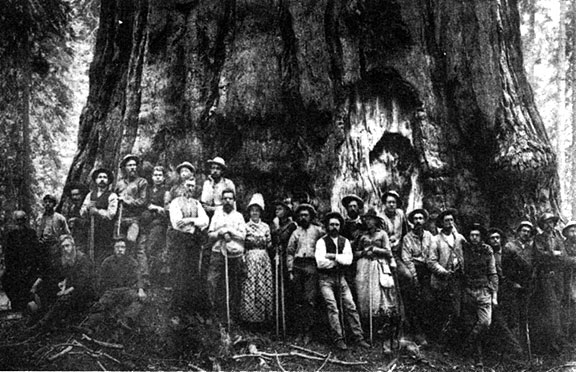 Members of the Kaweah Cooperative Commonwealth stand in front of the Karl Marx tree in what is now Sequoyah National Park (photo c. 1889). I’ve been attracted to utopian thinking for as long as I can remember. The concept of utopia implies for some “perfectability” but I never really took it that way. Seen in that light, it’s easy to see why some now hold utopia with suspicion, seeing it as harboring totalitarian nightmares of total control, an entirely prescribed and regulated life. For me, utopia has always been a kind of beacon, a challenge to think big, an opportunity to cast aside the patently stupid institutions and assumptions that plague our everyday lives and to imagine a life that proceeds under different structures. This doesn’t mean that the humans living in such an imaginary alternative society are suddenly perfect, or always good, or even that they all are committed to the same vision. Just that we could do a helluva lot better than this madhouse when it comes to imagining, and then implementing, a social system that facilitates human and ecological well-being.
There are hundreds of utopian visions in literature and history. Utopias as imaginary places are usually commentaries on the real world from which they emerged. Some go back to Plato’s Republic, but a more common starting point is Thomas More’s Utopia, written in 1516. Plenty of analyses have been written about utopia as a concept and as an historic phenomenon. One of the better treatments is Marie Louise Berneri’s Journey Through Utopia, in which she identifies the authoritarian Utopian State as a concept running through much of the literature. A desire to orchestrate good behavior through various hierarchical arrangements, analogous to a mechanical system with predictable results ensured by regulated consistent behavior, is a dark shadow over many utopias.
Continue reading Imagining Utopia
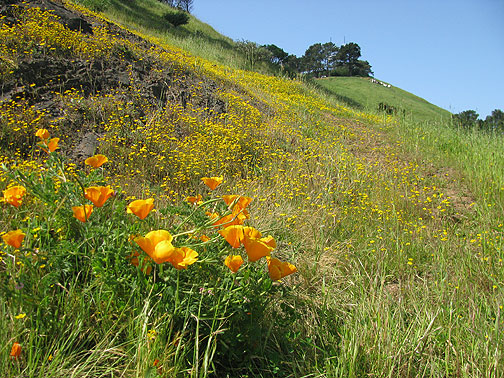 California poppies in foreground, then a sweep of Goldfields on Bernal Heights, taken two days ago. It’s that time of the year, but this is a particularly spectacular year. Heavy rains until just a couple of weeks ago, and even a sprinkle or two since then. The hills around the city and the surrounding area are brilliantly green, filled with wildflowers to delight even the most jaded observer… and let me tell you, I am NOT jaded about wildflowers! Here’s a bunch taken from Twin Peaks on Feb. 28, Bernal Heights during several different walks in the past two weeks of March, and a spectacular walk we took with a bunch of friends on the west slopes of Mt. Tamalpais in Marin last weekend. It had been at least 20 years since I hiked Steep Ravine trail and it was just as beautiful as ever. But more remarkable was seeing all the blooming Mt. Tam wild orchids all over the place! What a treat!
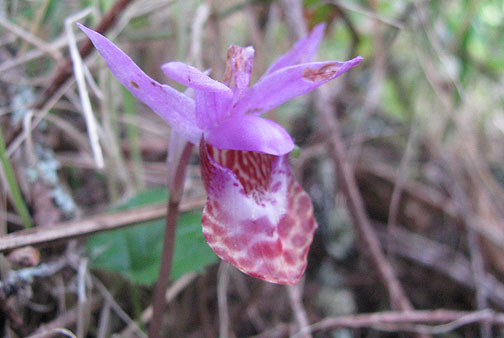 Mt. Tam wild orchid. 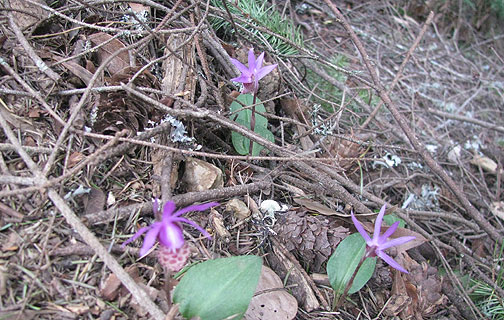 The wild orchids are very small and easy to miss if you're not looking. Continue reading Eye Candy: Spring Wildflowers
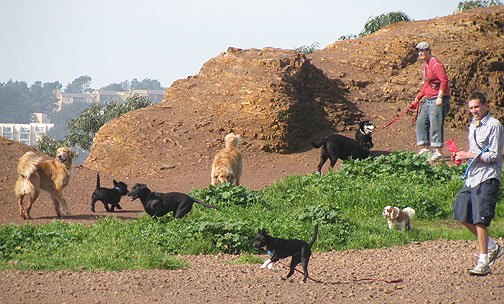 Dogs take over a favorite walking path. (I wrote this piece for Streetsblog, but they turned it down, so I’m putting it here. I hope to resume a more regular blogging life here now that the latest book is at the publisher’s, and the other big project, Ecology Emerges, is starting this coming Thursday. There are a lot of topics rattling around in my head that I plan to address in the coming weeks and months.)
I have some very dear friends in San Francisco and other parts of the world who are serious dog lovers. My landlady’s dogs are her biggest reason to stay alive. I know a lot of people whose dogs are family members, and whose emotional lives are completely wrapped up with their dogs. I don’t want to denigrate those relationships. I appreciate the many dog owners who are responsible, who pick up their dog’s shit, who keep their dogs on leashes or have close voice control.
That said, I am not a fan of dogs in public space. I was bit in the face by one when I was about four years old and for most of my life, I had bad allergies to dogs. I really don’t like encountering dogs wherever I go. I resent it when dog owners bring their pets into public establishments, whether restaurants, food stores, or performing arts venues. I resent it doubly when THEY are resentful that their pets are not welcome in those locations. I resent it triply when they think their pet has equal rights to other HUMANS.
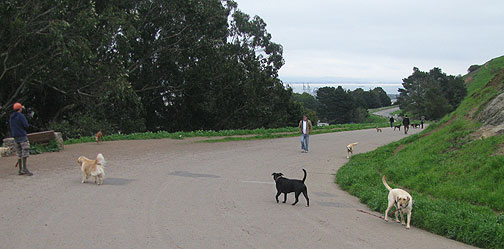 Twelve dogs, a typical sight on this stretch of the Bernal Heights ring road. Continue reading Not a Dog Person
|
Hidden San Francisco 2nd EDITION!

NEW 2nd EDITION NOW AVAILABLE!
Buy one here
(Pluto Press, Spring 2025)
|

















